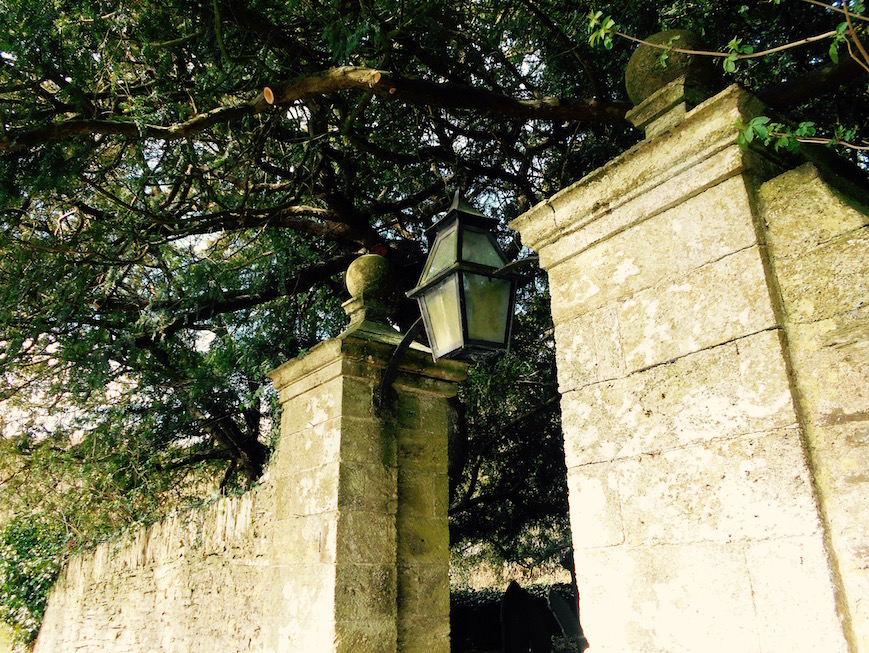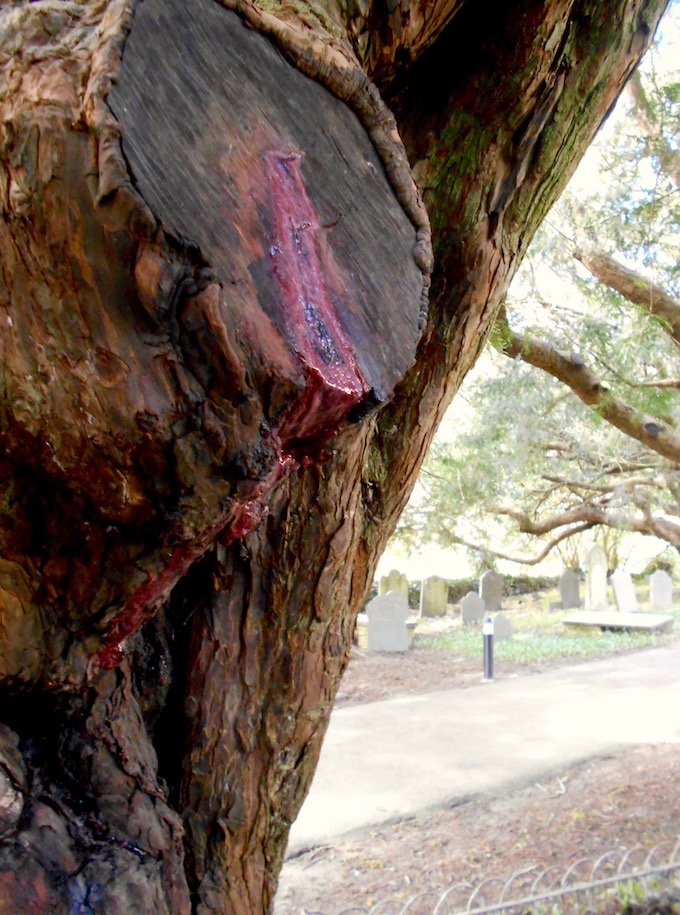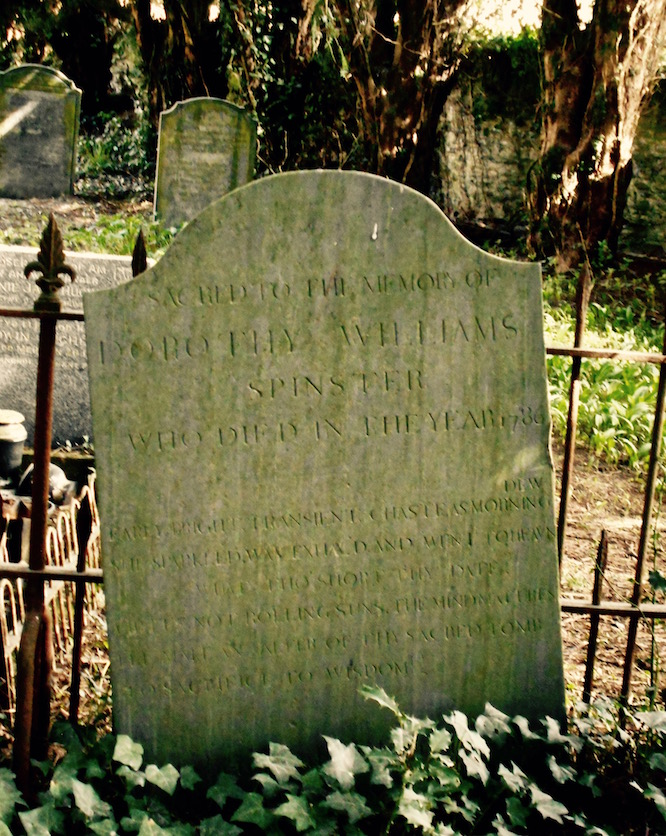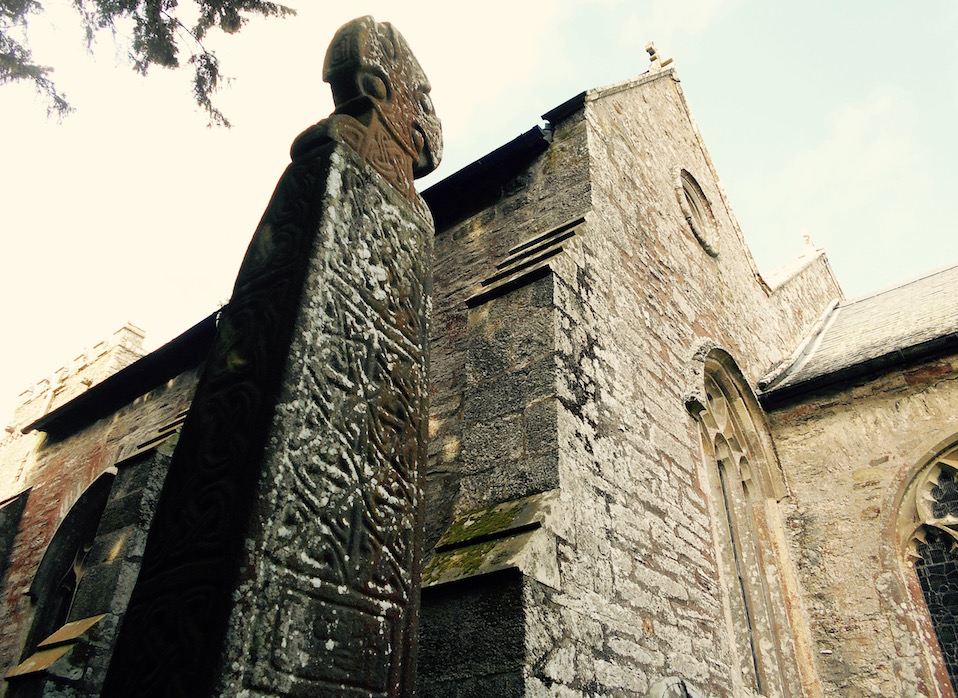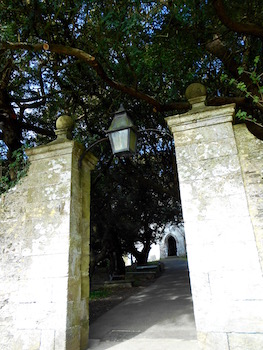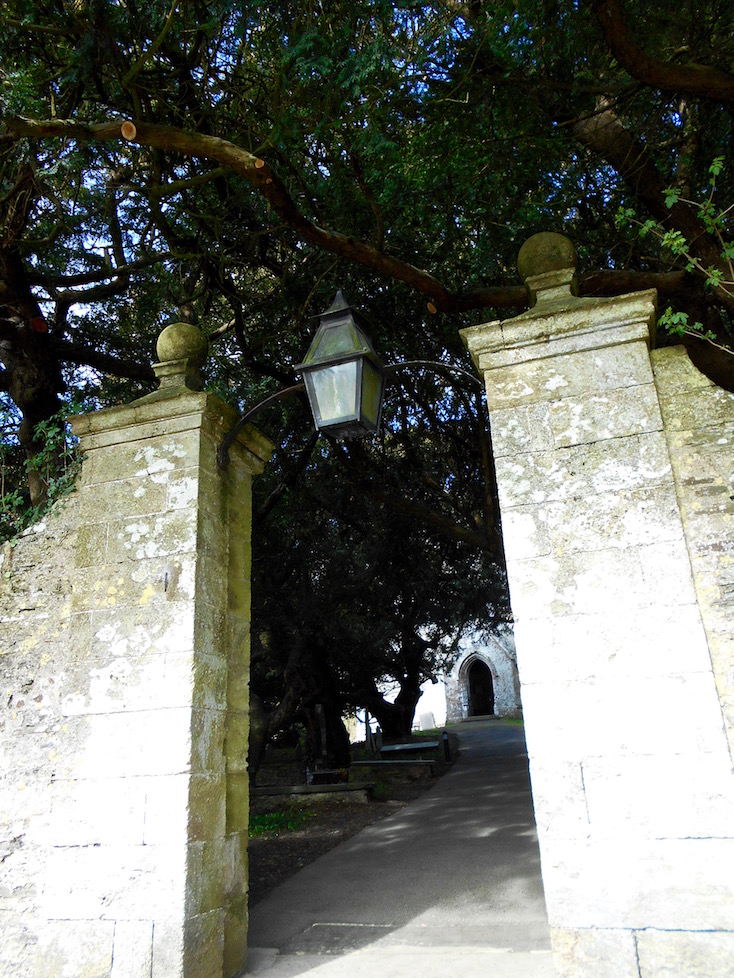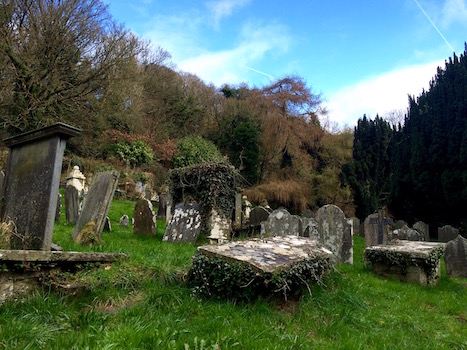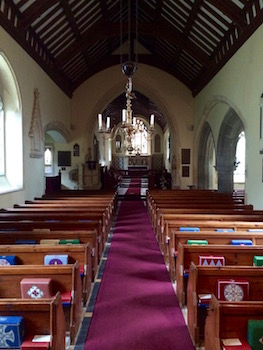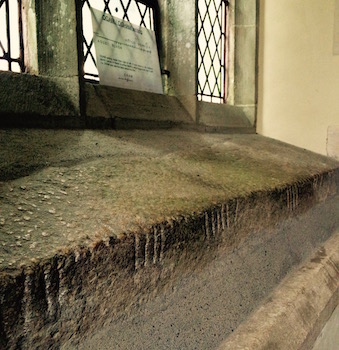March 16, 2017
After seeing Pentre Ifan P allowed me to continue picking random places on the map we should see before heading to Newport. Nevern, with it's ancient churchyard and Ogham-language inscriptions looked nearby - and it actually was! (albeit on single-lane two-way roads with 5 foot high verges and no visibility - but we're old hands at that stuff by now).
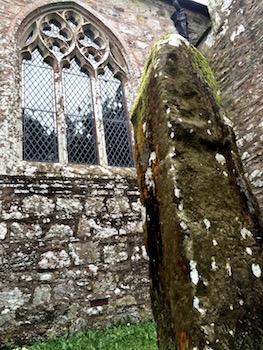
Being from southern New England, I remember watching local tv advertisements for visiting the state of Rhode Island that had a song about it being 'the biggest little state in the Union.' That's how I ended up feeling about Nevern (although I understand this would probably be a good name for St. David's as well - we'll wait until I've been there). For a tiny town without a ton of actual acreage or monuments - I left feeling like we saw a whole slew of ancient history while barely walking 200 feet.
Off to Nevern-Nevern Land
You try coming up with snappy titles all the time. It isn't easy.
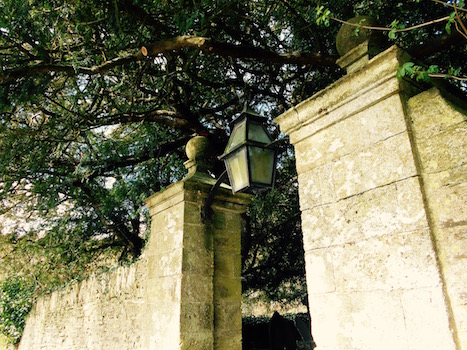
Anyway, as you drive into Nevern, you'll pass a charming inn that offers packed lunches and all day food - something you shouldn't usually pass up in Wales. But it wasn't quite lunch time yet, so we drove past over the similarly charming grey-stone bridge that threatened to not fit our car. The sun started shining off rivers and fields as we pulled up to the equally charming 6th century church, outside the charming churchyard of which was a terribly charming mounting block (that had the charming use of being something you climbed up onto to get into a horse or carriage).
It was hard not to be charmed. And I quickly realized that the people who wrote the guidebook, describing the area as 'darkly atmospheric,' and some of the sights as 'brooding' and with a 'dank, dark presence' must have visited on a very overcast day. Because in bright sunlight, everything was. . . You guessed it, it was charming.
St. Brynach would have appreciated the kneeling cushions
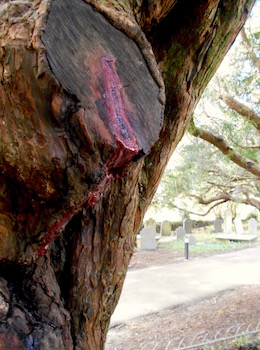
Walking through the main gate toward the church, you pass along a path lined with yew trees. Not only are these great for bow making, but one of them is - yes, you're reading this right - bleeding. The aptly named 'Bleeding Yew' has an unexplained constant flow of red liquid that seeps from it. Local legend says it will keep bleeding until there's a Welsh lord of the manor, which is unlikely to happen anytime soon given the state of the manor, apparently. All I know is it is indeed red, and weird, and it is actually a little smelly.
While the Bleeding Yew is rather famous, I myself preferred the tombstone to it's right, but then I always have a soft spot for 18th century romantic elegies to a deceased single woman. All graveyards have descriptions of men like 'Jon Wilson, Captain' or 'Mark Balsam, Plumber', but it's just wonderful to see that there are in fact three options for women - not just 'Mother' or 'Wife', but also apparently 'Spinster'. And now the world can visit this particular grave and know its occupant was 'chaste as the morning dew.'

Reminding P that this is his job to give me a Viking funeral so what to put on my tombstone won't be an issue, we surveyed the rest of the churchyard and also the church itself.
Some background: in 540AD an Irish-born man named Brynach came to Pembrokeshire with his wife Cymorth and her father, a Breconshire chieftain. He founded several churches, one of which was Nevern. As history tells it he founded the Nevern church where he found some piglets suckling and wild stags brought timber out of the forests for him. I don't know if the wildlife helped him with the masonry as well, given the general need for opposable thumbs when using a trowel, but apparently the church got built somehow.
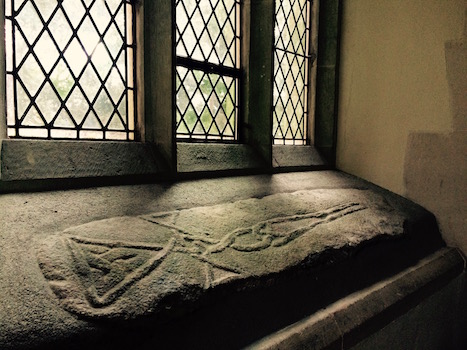
In fact, the industrious animals helping St. Brynach seem to have found use for the stone-work of Nevern's pre-6th century inhabitants as well. Two large stones are now embedded in the church's windows, each has inscriptions dating from the end of the Roman era - i.e. pre-500AD. Those sneaky animals apparently used them to build the walls of the passage to the priest's chamber over the chapel, and they were only discovered there when the archaeological society visited in 1906 (or this may have happened during one of the church's many restorations).
On the left, the 5th century Magloconus Stone is basically the Rosetta Stone of Ogham (a Celtic language the Irish version of which was used in Wales at that time), as it contains both the parallel strokes carved into the stone in that language, alongside a Latin inscription. Archaeologists used this inscription as a key to how to translate Ogham. On the right, the Cross Stone is an early carving of a Celtic cross. Outside the church there's also another 5th century Ogham-Latin bilingual stone called the Vitalianus stone, this one is a monument that has stood there since before the church was built.
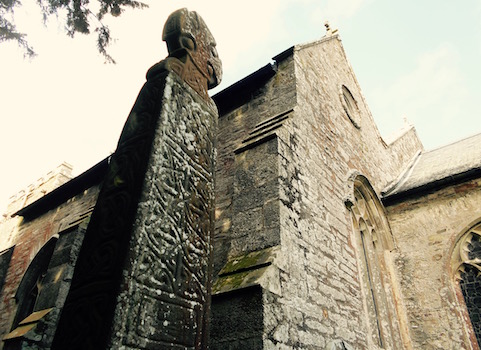
So, after the animals finished building the church in the late 6th century, St. Brynach and his good friend St. David passed away and were made saints. One of them became the patron saint of Wales and the other didn't. But St. Brynach was probably cool with that, because his churches - including the prominent Nevern - became a part of the pilgrimage to St. David's, further south on the Pembrokeshire coast.
Surviving the constant onslaught of Viking raids during this time, the pilgrims even managed to ornament the church with it's current hallmark - the towering Great Celtic Cross. Standing 13ft high, the 10th century Cross dwarfs over everything else in the churchyard, and is one of only three crosses of similar date and craftsmanship in Wales. On April 7, which is St. Brynach's saint's day, Mass is delayed until the cuckoo which traditionally alights on the cross begins to sing. In keeping with the magical-animal nature of the place, this apparently happens every year.

Of course, in the late 11th century the Normans came to south Wales, and they pushed the Irish chieftains out. They made Nevern their headquarters for some time. The church continued as Catholic until (and this may be my favorite quote from the explanatory cartoon history found at the back of the church) in 1534 'to accommodate Henry VIII the Church of England is founded. No one likes it and Catholic practices continue clandestinely. There is at least one priest-hole locally.' Good to know no one liked it.
In any case, though the church itself admits that today there is very little Welsh left - there are definitely plenty of other things to see. Not only are the above monuments interesting examples of ancient history that you can rarely find outside of museums never mind in a working church, the church itself is well maintained, and, dare I say it, bright and festive. I've never seen individual kneeling cushions before, but whoever festively embroidered the 100 or so rectangular cushions to make prayer in St. Brynach's pews more comfortable deserves a decorative arts award.
I hope that in 500 years they'll be in the window next to the Magloconus Stone.




